9 types of squats and their unique benefits, as revealed by personal trainers
Adding one of the many types of squats into your workout can help boost your strength, balance and flexibility with no equipment required
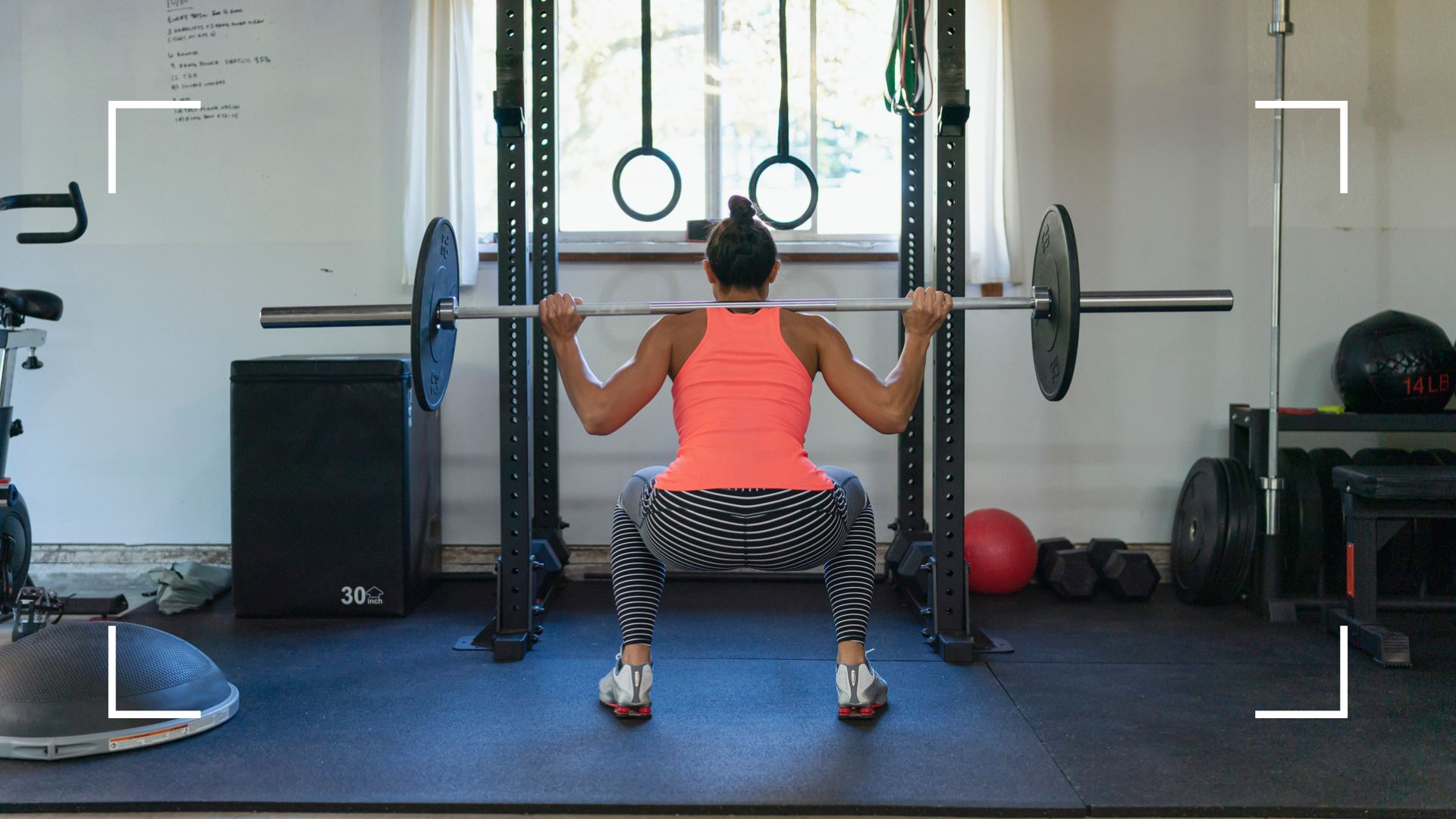
Bringing different types of squats into your workout isn't only a way to strengthen and tone your lower and upper body, it's also one of the best ways to increase the strength in your quads, hips, glutes, calves, and feet.
The squat covers many elements of daily movement as well, including sitting down on a chair, getting in and out of a car, and even going to the bathroom, so including this exercise in your strength training routine now is going to pay dividends in the years to come. "It's essential that women over 45 start incorporating squats into their workouts so we can carry on with everyday movements and maintain strength, mobility, and balance for as long as possible," says Anya Russell, a personal trainer.
The good news is that there are loads of different types of squats you can try, from bodyweight movements to exercises with kettlebells, dumbbells, barbells and resistance bands. Here, personal trainers reveal the different types of squats they include in their strength training routines and how to do them.
Types of squats
1. Bodyweight squat
The bodyweight squat is important to master before you move on to the more complex types of squats on this list - especially if you're doing strength training for beginners at home. This is one of the best bodyweight exercises for the way it "uses the glutes, quads and hamstrings," says Pilates instructor and founder of Shape Pilates, Gemma Folkard. "However, it's a full body integration with lots of core stability, plus proprioception through the feet, lifting the arches and stabilising the ankles."
When doing a bodyweight squat, concentrate on keeping your chest upright and getting down as low as you can while still feeling stable and keeping your feet flat on the ground. Start by doing a set number (8, 10, 12 etc) and then build up.
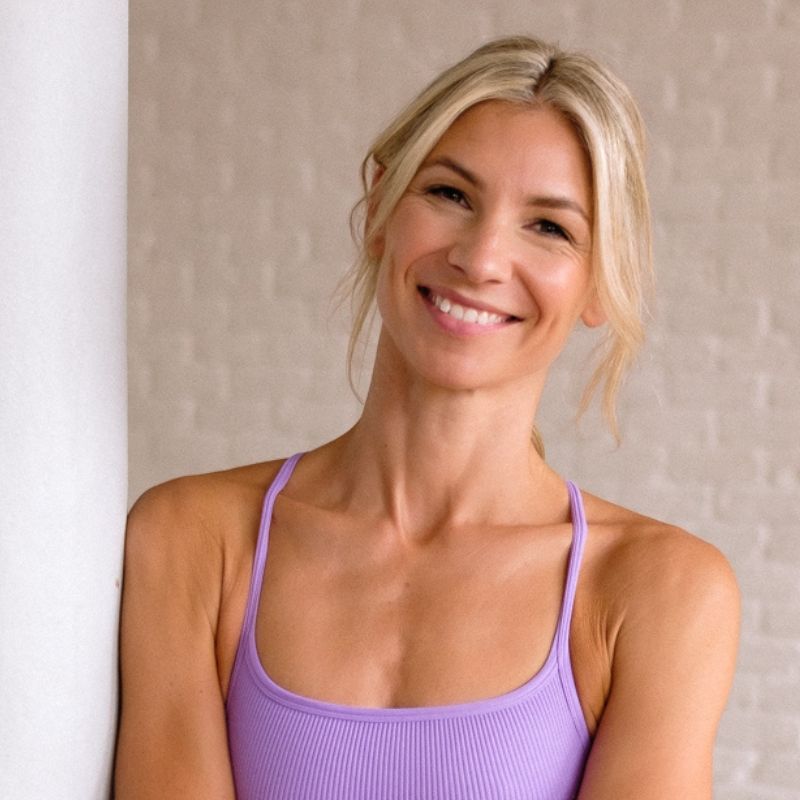
Gemma Folkard is a Level 3 Pilates matwork instructor, who trained under the expert guidance of Joanne Cobbe, founder of JPilates Ltd. She trained in 2015 and eventually left her career in online advertising to pursue Pilates full time. The business has grown alongside her three children, and since then she has also qualified in pre/postnatal and Reformer Pilates. Gemma bring's all of these skills to the classes at Shape. Her goal is for everyone to feel the benefits of this beautiful practice, and to help people create movement habits that last a lifetime.
2. Sumo squat
Sumo squats are very similar to regular squats - except you need a wider stance and a slight turnout of your hips. PT Natalie Rose Edwards recommends this type of squat for targeting the glute muscles (buttocks), core, and inner thighs.
"Tuck the tailbone and bend both knees while driving the weight back into the heels," says Edwards. "Add a pause to build time under tension and a pulse to burn out the side glutes."
Sign up for the woman&home newsletter
Sign up to our free daily email for the latest royal and entertainment news, interesting opinion, expert advice on styling and beauty trends, and no-nonsense guides to the health and wellness questions you want answered.
As well as shaping and lifting your bum, a sumo squat helps to support your leg and hip muscles for other forms of exercise - including cardio like power walks and jogging.
If you find these a little too easy with your body weight - i.e. you can complete three sets of 12 reps without an issue - then add some resistance with one of the best resistance bands or a kettlebell clasped close to your chest.
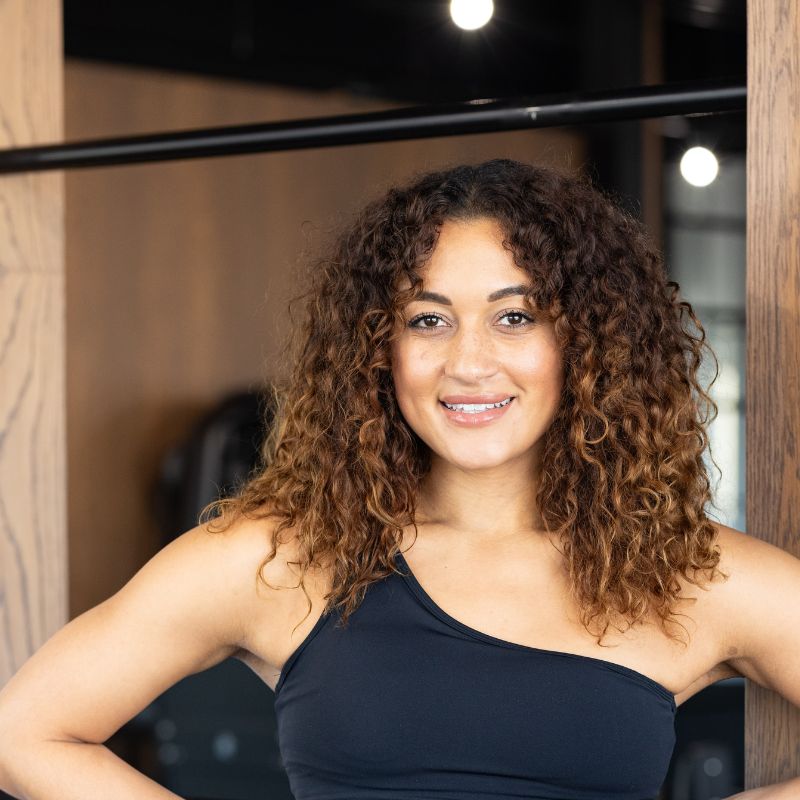
Natalie Rose Edwards is a personal trainer, Pilates and Barre instructor, and founder of 3-2-8 Method. She is a specialist in women's health, balanced training and sustainable fitness routines for the modern women.
3. Goblet squat
While you're holding your kettlebell or resistance bands, try a goblet squat as part of a gym dumbbell workout. This type of squat is a great way to get a really deep stretch, one that works the hips, groin, inner thighs, ankles, knees, and hips, says Folkard.
"Start with your feet under your hips and the weight in a goblet position in line with your chest," says Edwards. The goblet position means holding the dumbbell vertically with both hands underneath the top of the weight. So, if you're holding a kettlebell, you should grip the weight by the handle just under your chin.
"Elbows lifted, send your weight back into your heels as you bend your knees like you're sitting on a chair behind you. Pause for time under tension, then focus on pushing the floor away to return to standing," she says.
The key with a goblet squat is getting as low as possible - lower than parallel to your knees, if possible. It's a challenge, says Edwards, as "we tend to lose this range of motion in the knees and ankles as we age". So, if you find this difficult, tuck a small platform (like a weighted disc if you're in the gym or a hardback book if you're working out at home) under your heels to provide some artificial ankle mobility.
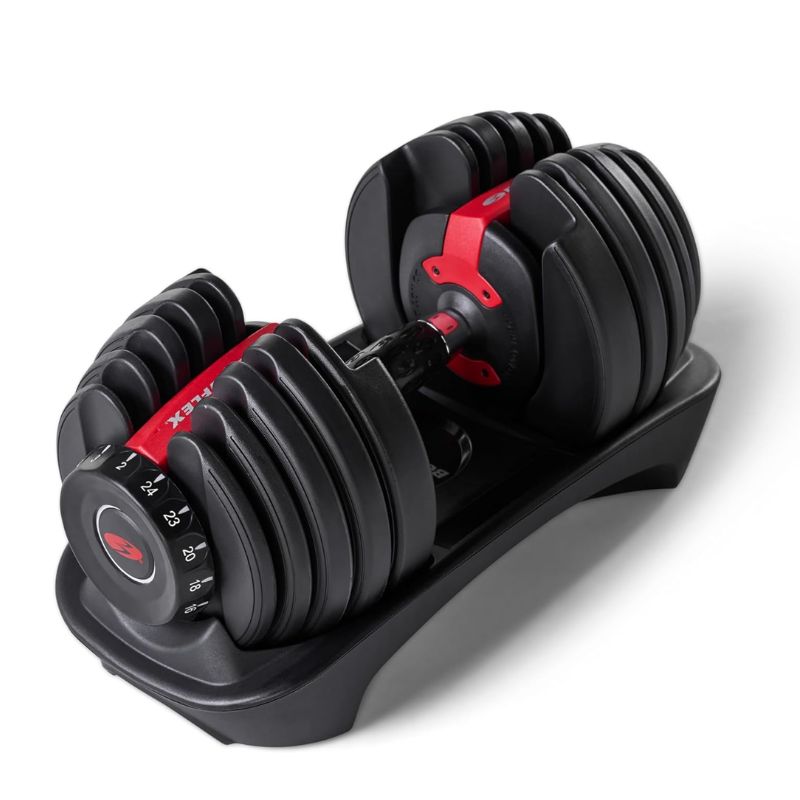
Limited on space but want to add some resistance to your workout? The Bowflex adjustable weights are for you. The steel plates can be adjusted with a simple turn of the dial - taking them from 2-24kg in just seconds - without the need for a full weights rack.
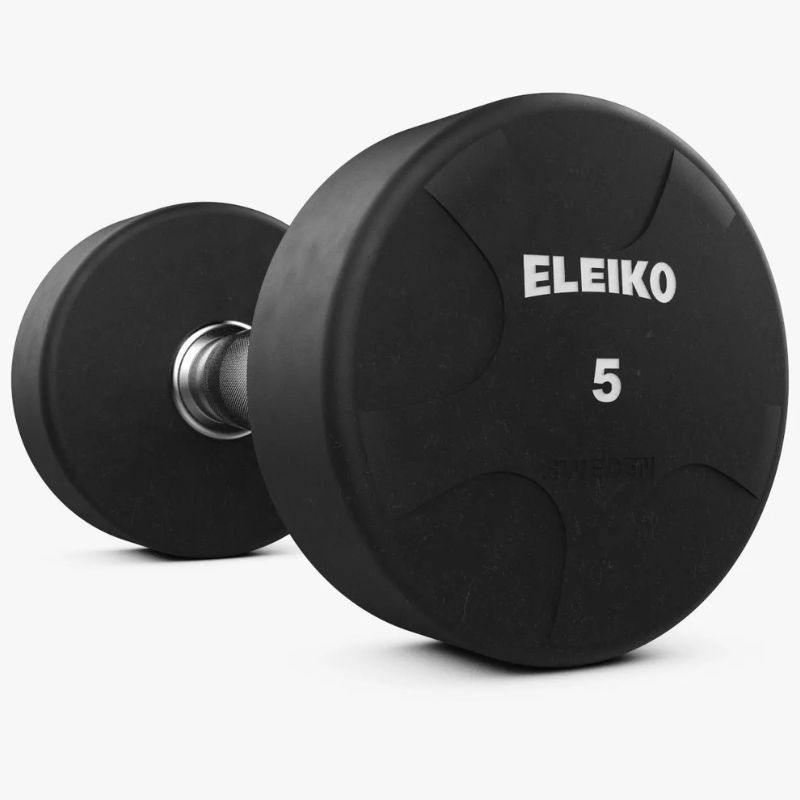
The Ekeiko range of dumbbells are among our favourites as they are made from polyurethane, which is twice as strong as rubber, and the weights have sloped handles for easy holding. Available in weights from 1kg to 40kg.
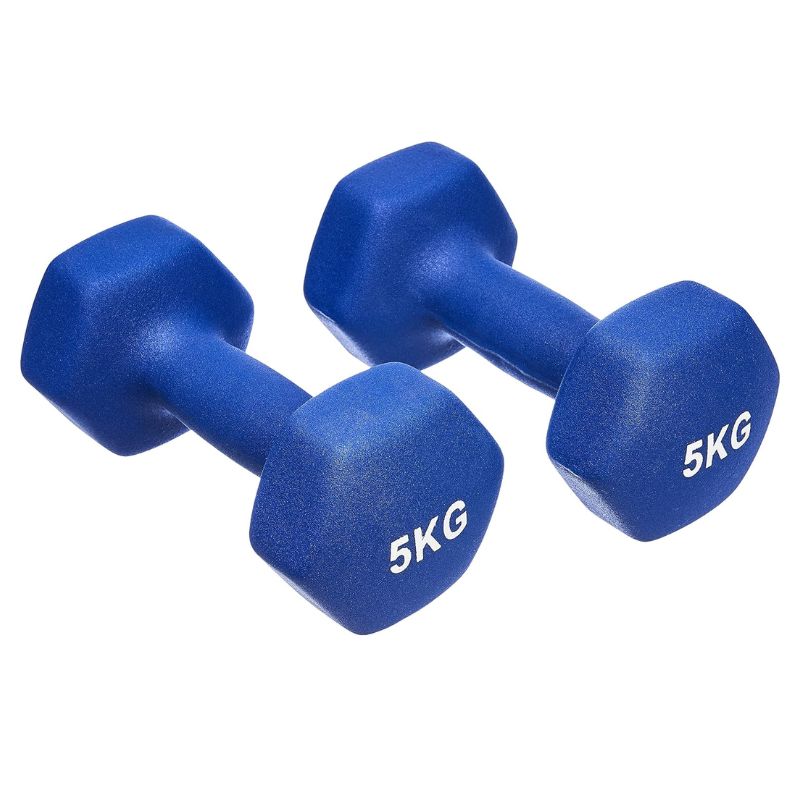
For those looking for less weight or a more budget-friendly accessory to their workout, Amazon Basics have an excellent range of dumbbells ranging from 1kg to 5kg. Made from neoprene for an easy-grip hold, the weight is identified with a label on either end and the overall hexagonal shape makes for easy storage as the weight doesn't roll away.
4. Squat hold
PT Edwards is a fan of the squat hold, a movement that takes you to the bottom of the squat to build up your muscular endurance, time under tension, and muscle-mind connection.
You don't need any equipment for this one - it's one of the best bodyweight exercises. "Start with your feet under your hips, send the weight back to your heels and squat down. Extend your arms long, in line with your shoulders. The longer the pause, the more intense the movement will be."
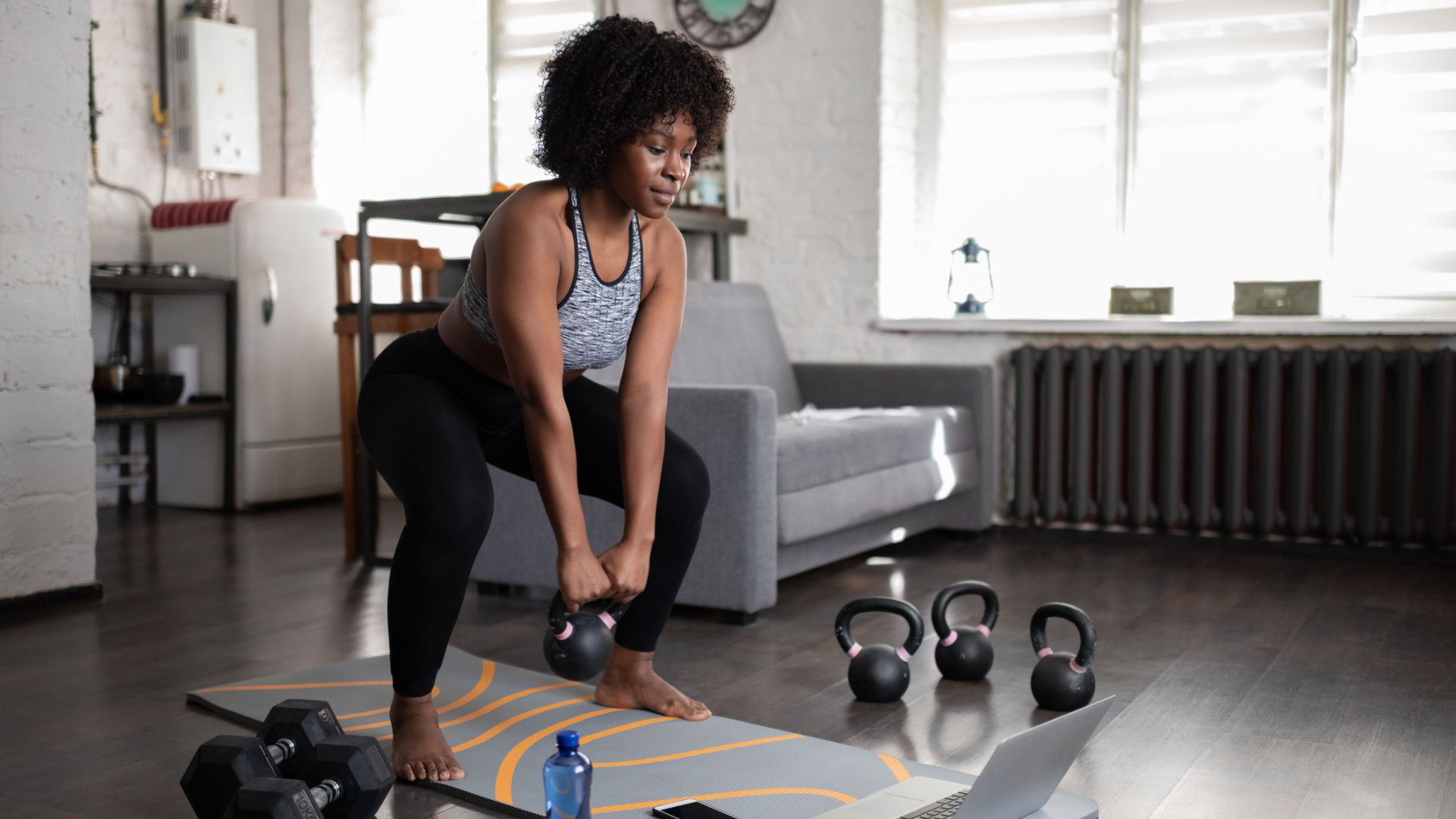
5. Squat jump
Weighing up cardio vs strength training and want to combine the benefits of both? Try a squat jump. This type of squat is great for building your agility, stamina, and overall athletic performance.
"These are performed by coming down to the bottom of a squat position then explosively jumping upwards, landing softly and immediately descending into the next squat jump," says PT Anya Russell.
For a more advanced workout, some people may also choose to try a jump squat onto a box. This is when you bend your knees, push your legs upwards into a jump and swing your arms to propel yourself onto the top of the box. Make sure you land safely though and only jump to a height you can comfortably manage.

Anya is a Girls Gone Strong qualified personal trainer and group fitness coach serving women in all stages of their lives whether it be pre-pregnancy or post menopause . She has 12 years experience as a trainer and has conducted over 10,000 in-person and online personal training sessions and taken 1000+ fitness classes taken during that time.
6. Plié squat
Folkard says she likes to incorporate plié squats into her Pilates classes because they are really beneficial for your calves and hip flexibility and take some of the pressure off your glutes and quads.
"The hips are turned out and the chest stays upright as you descend, rather than hinging from the hips and sending the hips backwards," she says. "From here, it’s a great place to add in some holds and pulses, and get the feet working with heel lifts."
7. Wall squat
Wall Pilates hit new heights of popularity earlier this year - and the wall squat is an essential movement in the routine. It's perfect for a quick exercise snack during the day and it can be done anywhere - all you need is a wall.
Hold your squat position with your back flat against a wall for a set time, or for as long as you can. Aim for 15 seconds to begin with, increasing your time under pressure in 10-second instalments. "Wall squats are great for improving muscular endurance. They are low impact and promote core activation and good posture,” Russell says.
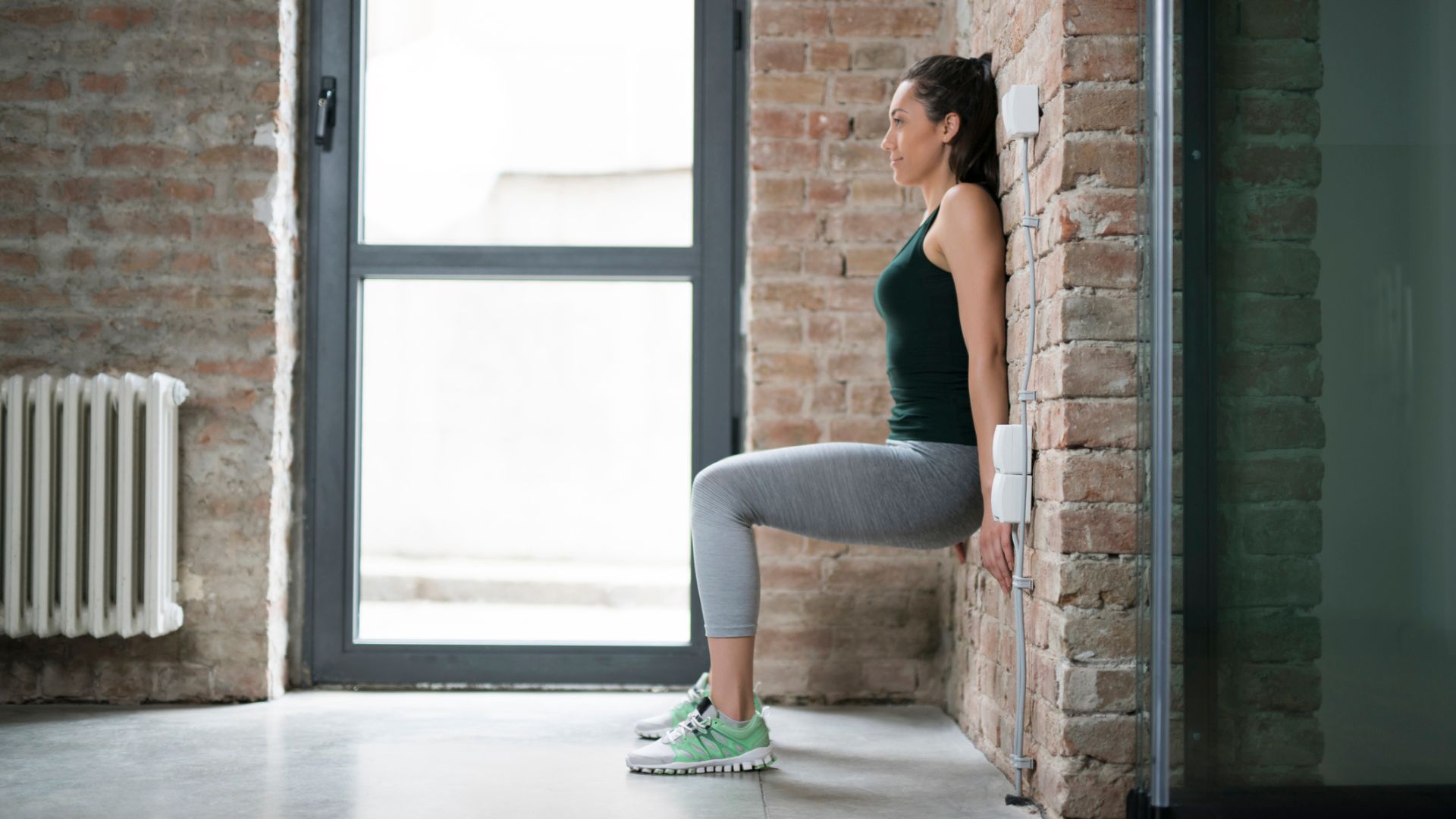
8. Single leg squat
The single leg squat - otherwise known as the pistol squat - is definitely for those more practised in the squat and with a good level of leg strength. "Extend one leg in front of you while you squat down with the other leg, keeping the elevated leg off the ground," says Russell.
"These are quite an advanced exercise, so it can be modified by using a chair to squat up and down," she adds. This is also a key part of a chair workout, another accessible type of strength training.
"Single-leg squats also require a lot more balance and stability compared to traditional squats as they engage the stabiliser muscles around the ankle, knee, and hip," Russell says.
You can build up to a single-leg squat by practising other single-leg exercises too, such as walking lunges.
9. Barbell back squat
The barbell back squat is often what comes to mind when people think about squatting in the gym. A barbell is a long handle weight placed across the upper back and loaded with weights, starting from as little as 1.25kg as the bar itself often weighs between 15kg and 20kg.
"The advantage of this exercise is there is increased stability, the option to lift much heavier loads and also a greater potential for progressive overload," says Russell. This means you can increase the intensity of your workouts.
Which type of squat is best?
If you're new to strength training, then it's best to start with a bodyweight squat or a dumbbell workout for beginners as this will help you perfect the form and technique before moving onto heavier weights. "It's essential that you can perform the exercise correctly before adding any load to avoid injury," says Russell. "If you struggle with that then sit on a chair with your feet about hip-width distance apart. Practice coming up to standing and hinging your hips back, bending your knees as you sit back down again - and then progress from there."
However, if you've already mastered the squat form, moving onto a goblet squat to work on your mobility could be a good option, or a barbell squat to help you get stronger.
If done correctly, all of these types of squats are worth adding to your workouts and you will notice your body becoming stronger over time. "It very much depends on you and what your form is like, your strength level and what your goals are [as to what type of squat you do]," says Russell.
Edwards says she adds all variations of squats to her clients’ programmes “because they are so versatile and perfect for building lower body strength. Not only that, but they lift and shape the glutes while also improving overall muscular endurance and boosting your metabolic rate, since the more muscle mass you have, the more calories you burn at rest."
Benefits of squats
There are many benefits to doing squats, such as increasing your strength, bone density and cardiovascular fitness. While strength training is useful for women at any age, it's particularly beneficial for those over 45. "Those either in perimenopause or menopause are losing approximately 1 to 2% of their muscle mass each year, experiencing a decrease in their bone density," says Russell.
Squats as part of a strength training routine can also:
- Reduce the risk of osteoporosis, which can affect women as they age
- Help keep your hips extra mobile and maintain glute strength, which is important for a healthy spine
- Help with day-to-day movements such as getting up from a chair, picking items up from the floor and getting out of a car
- Contribute to performance in other sports, such as running, cycling, and tennis
- Increase your lean muscle mass, which will boost your metabolism in turn
A final note on squats from Folkard: Find a trainer who can teach you the correct way to do the many types of squats if you're struggling - or download one of the best strength training apps with tutorials. "And don't ever rush, as this is when injuries happen due to a lack of concentration," she says.

Kat Storr has been a digital journalist for over 15 years after starting her career at Sky News, where she covered everything from world events to royal babies and celebrity deaths. After going freelance eight years ago, she now focuses on women's health and fitness content, writing across a range of UK publications.
From perimenopause to the latest fitness trends, Kat loves researching and writing about it all. She's happy to give any fitness challenge a go and speaks to experts about wellbeing issues affecting people every day.
-
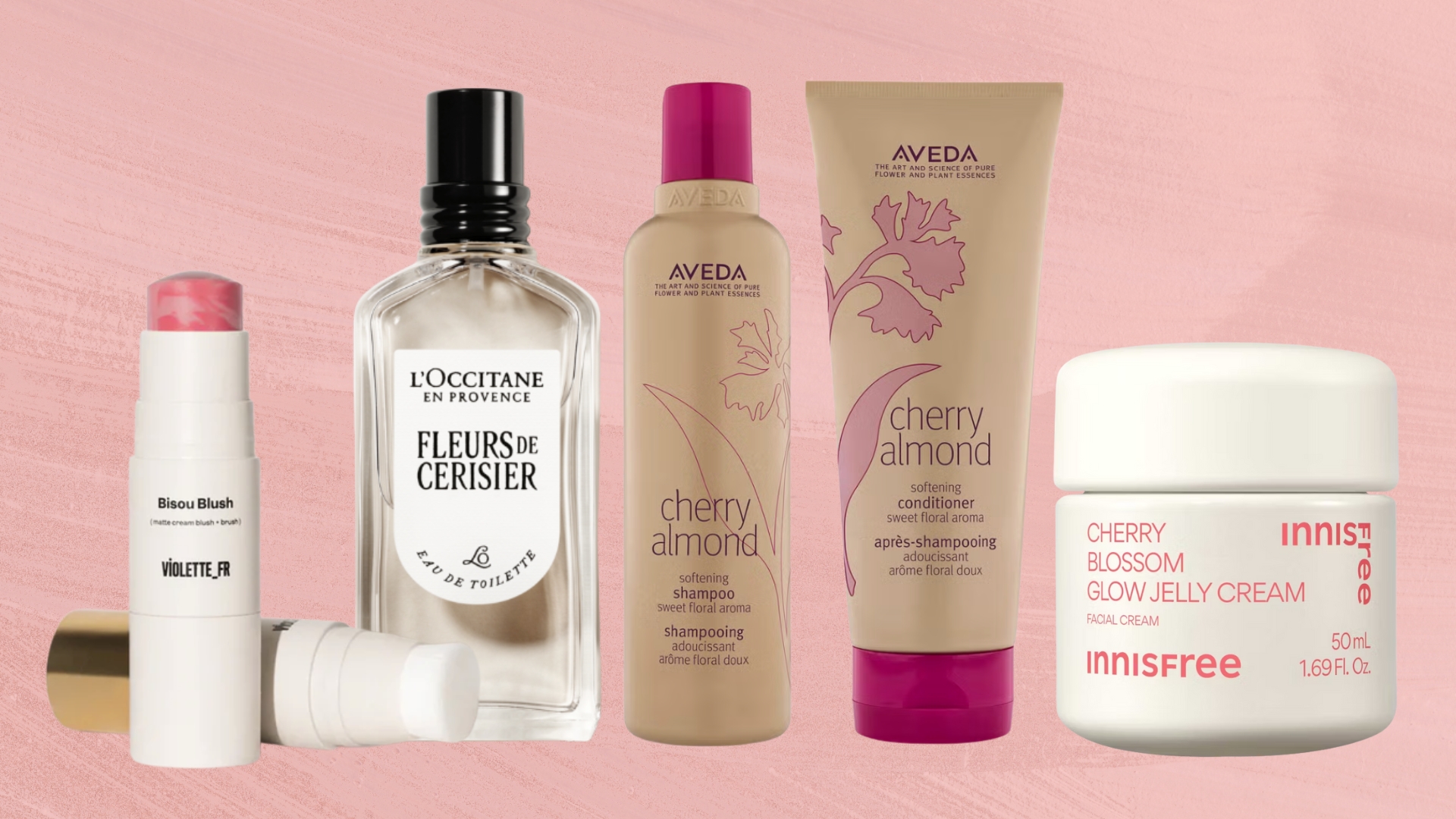 Cherry blossoms aren't just blooming outside, they're springing up in our beauty bags too - here are 9 buys to embrace the soft trend
Cherry blossoms aren't just blooming outside, they're springing up in our beauty bags too - here are 9 buys to embrace the soft trendFrom delicate, floral fragrances to cherry blossom-powered skincare, the beauty world is besotted with the pink flower this spring...
By Naomi Jamieson Published
-
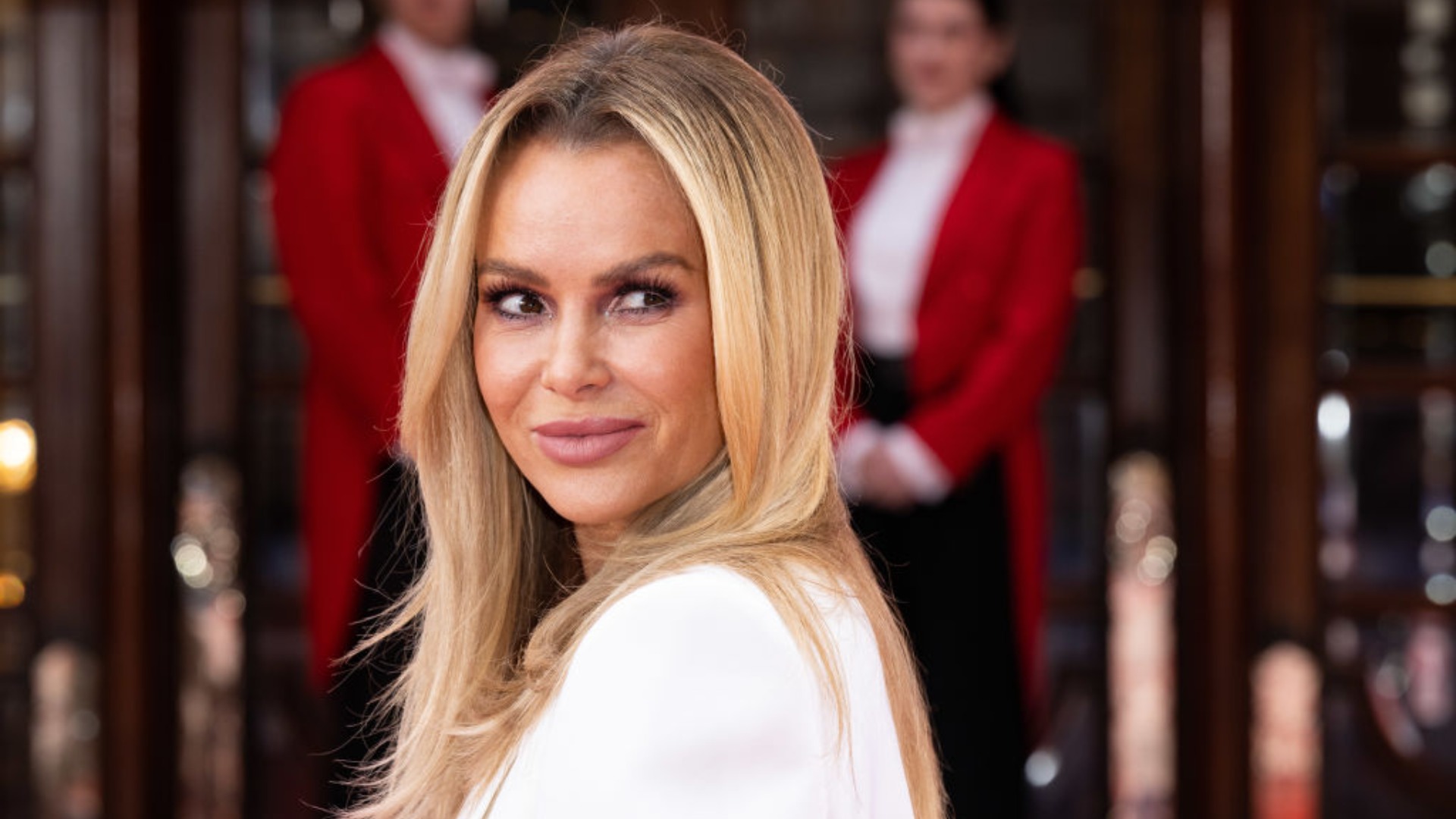 Amanda Holden's gold choker necklace is the perfect jewellery to wear with collared shirts
Amanda Holden's gold choker necklace is the perfect jewellery to wear with collared shirtsFinding necklaces to wear with shirts can be tricky, but Amanda Holden has struck gold.
By Charlie Elizabeth Culverhouse Published